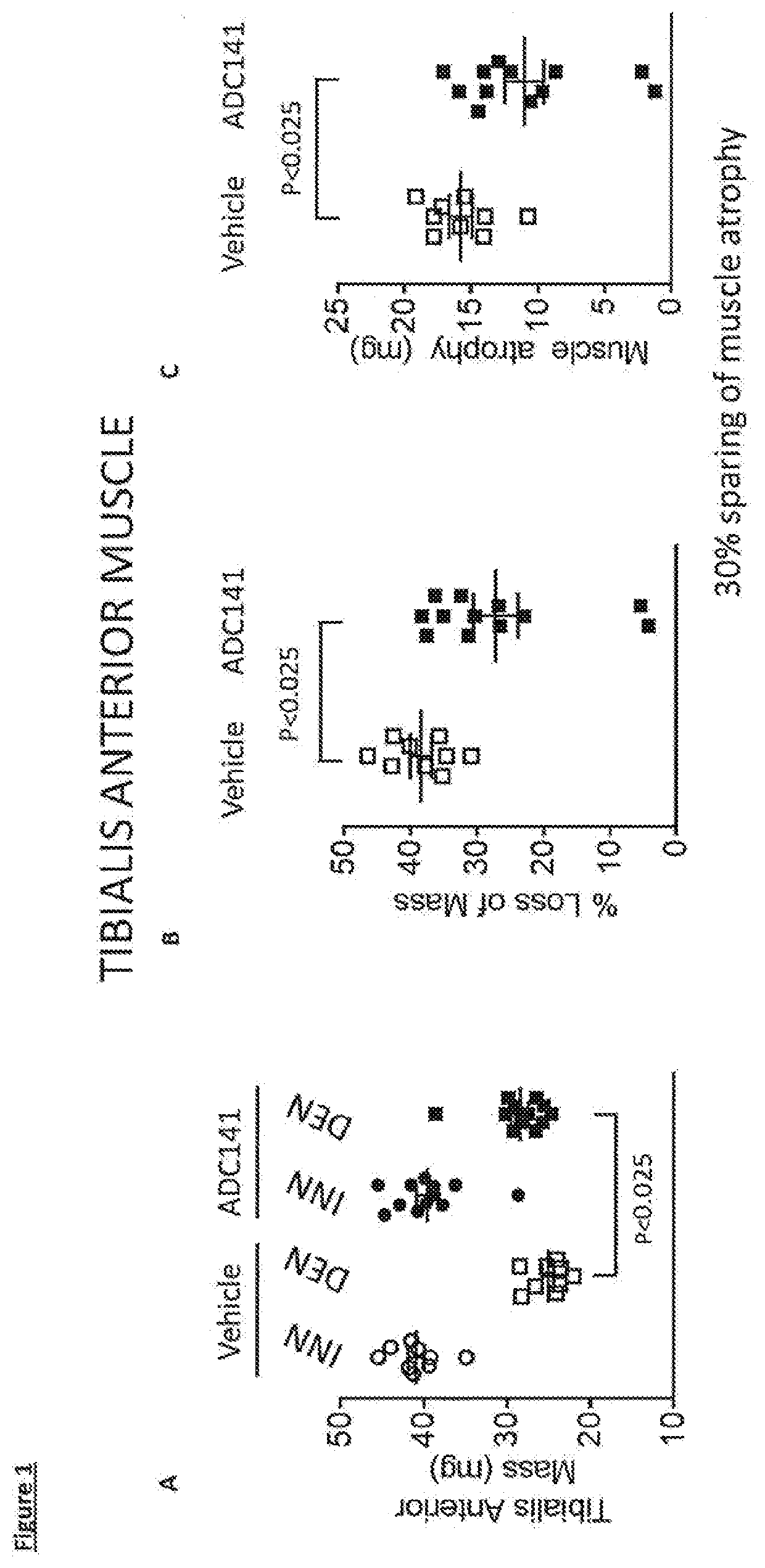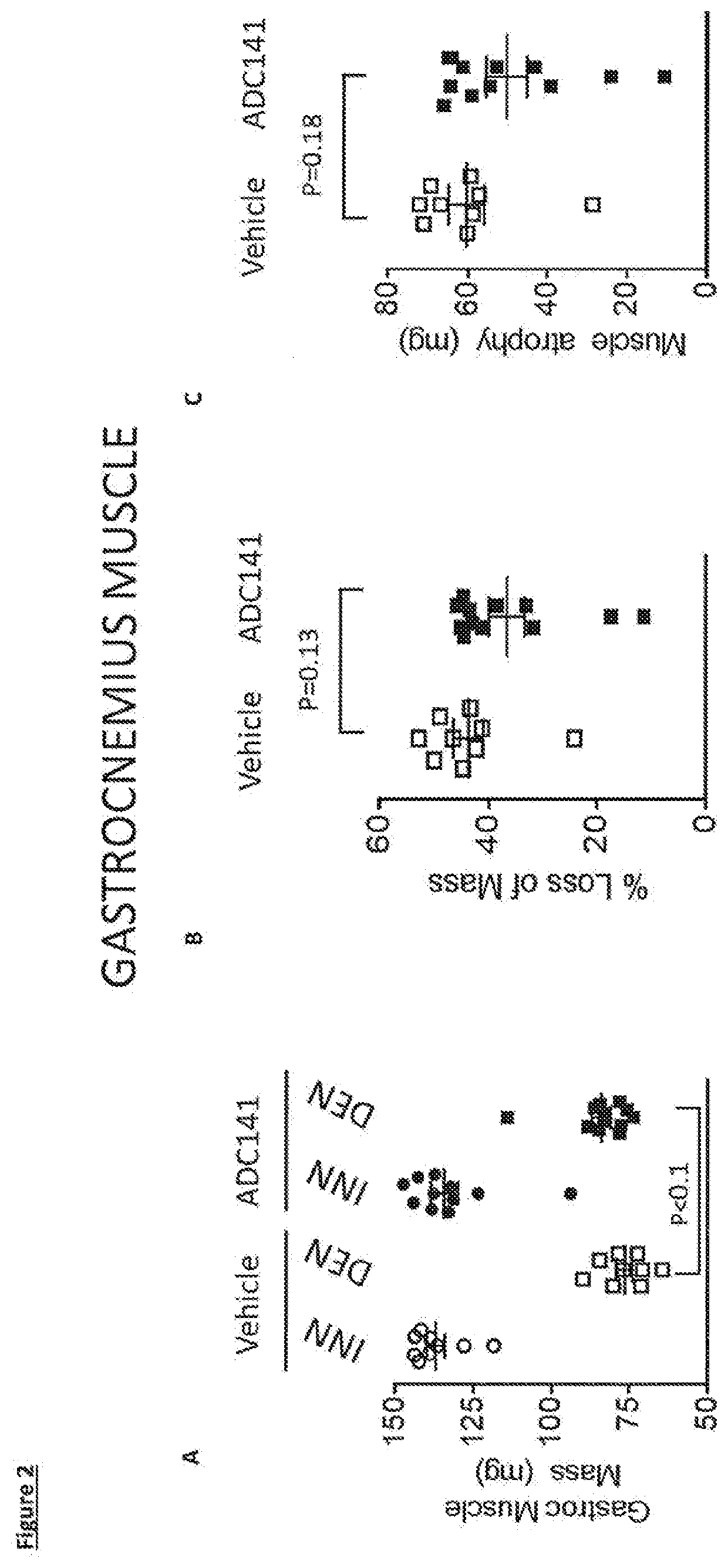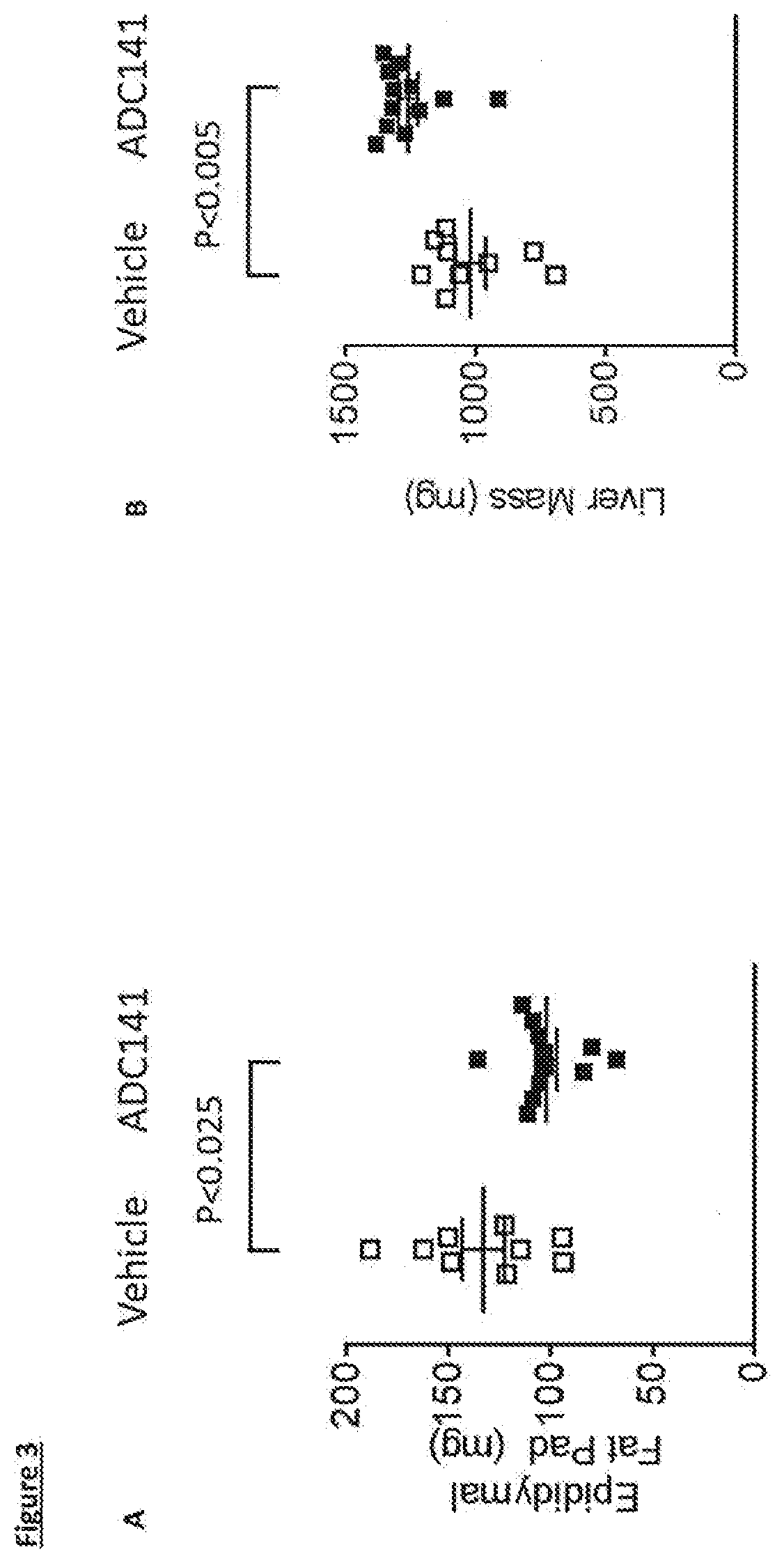Pharmaceutical compounds and their use as inhibitors of ubiquitin specific protease 19 (USP19)
a technology of ubiquitin and protease 19, which is applied in the direction of drug composition, muscular disorder, metabolic disorder, etc., can solve the problems of increasing morbidity and mortality of cancer patients, severely limited clinical utility, etc., and achieves the effect of increasing liver mass and reducing fat mass
- Summary
- Abstract
- Description
- Claims
- Application Information
AI Technical Summary
Benefits of technology
Problems solved by technology
Method used
Image
Examples
example 1
)-3-Cyclohexyl-2-methylpropanoyl)-4-hydroxy-3,3-dimethylpiperidin-4-yl)methyl)pyrazin-2(1H)-one
[0916]
[0917]Step 1: tert-Butyl 4-hydroxy-3,3-dimethyl-4-((2-oxopyrazin-1(2H)-yl)methyl)piperidine-1-carboxylate: Prepared according to General Procedure 2 using pyrazin-2(1H)-one (30 mg, 0.312 mmol), Epoxide 1 (98 mg, 0.406 mmol) and cesium carbonate (204 mg, 0.624 mmol) in NMP (1 mL), heated to 80° C. for 3 h to give the title compound (50 mg, 47%). LCMS (Method A): RT=1.15 min, m / z=338 [M+H]+; 282 [M-butene+H]+.
[0918]Step 2: 1-((4-Hydroxy-3,3-dimethylpiperidin-4-yl)methyl)pyrazin-2(1H)-one: Prepared according to General Procedure 3 using tert-butyl 4-hydroxy-3,3-dimethyl-4-((2-oxopyrazin-1(2H)-yl)methyl)piperidine-1-carboxylate (50 mg, 0.148 mmol), DCM (1 mL) and TFA (0.5 mL), stirred at rt for 2 h to give the title compound (35 mg, quantitative). LCMS (Method A): RT=0.37 min, m / z=238 [M+H]+.
[0919]Step 3: 1-((1-((R)-3-Cyclohexyl-2-methylpropanoyl)-4-hydroxy-3,3-dimethylpiperidin-4-yl)met...
example 2
)-3-Cyclohexyl-2-methylpropanoyl)-4-hydroxy-3,3-dimethylpiperidin-4-yl)methyl)-5-phenylpyrazin-2(1H)-one
[0920]
[0921]Step 1: tert-Butyl 4-((5-bromo-2-oxopyrazin-1(2H)-yl)methyl)-4-hydroxy-3,3-dimethylpiperidine-1-carboxylate: Prepared according to General Procedure 2 using 5-bromopyrazin-2(1H)-one (2.62 g, 15 mmol), Epoxide 1 (3.98 g, 16.5 mmol) and DIPEA (13.1 mL, 75 mmol) in NMP (30 mL), heated to 110° C. for 20 h to give the title compound (850 mg, 13%). LCMS (Method B): RT=1.18 min, m / z=316, 318 [M-Boc+H]+. Step 2: 5-Bromo-1-((4-hydroxy-3,3-dimethylpiperidin-4-yl)methyl)pyrazin-2(1H)-one: Prepared according to General Procedure 3 using tert-butyl 4-((5-bromo-2-oxopyrazin-1(2H)-yl)methyl)-4-hydroxy-3,3-dimethylpiperidine-1-carboxylate (850 mg, 2.04 mmol), DCM (10 mL) and TFA (5 mL), stirred at rt for 30 min to give the title compound (510 mg, 79%). LCMS (Method B): RT=0.41 min, m / z=316, 318 [M+H]+.
[0922]Step 3: 5-Bromo-1-((1-((R)-3-cyclohexyl-2-methylpropanoyl)-4-hydroxy-3,3-dimet...
example 3
)-3-Cyclohexyl-2-methylpropanoyl)-10-hydroxy-7-azaspiro[4.5]decan-10-yl)methyl)pyrazin-2(1H)-one
[0924]
[0925]Step 1: tert-Butyl 10-hydroxy-10-((2-oxopyrazin-1(2H)-yl)methyl)-7-azaspiro[4.5]decane-7-carboxylate: Prepared according to General Procedure 2 using pyrazin-2(1H)-one (100 mg, 1.04 mmol), Epoxide 2 (362 mg, 1.35 mmol) and cesium carbonate (678 mg, 2.08 mmol) in DMF (3 mL), heated to 80° C. for 2 h to give the title compound (120 mg, 31%). LCMS (Method A): RT=1.61 min, m / z=364 [M+H]+; 308 [M-butene+H]+.
[0926]Step 2: 1-((10-Hydroxy-7-azaspiro[4.5]decan-10-yl)methyl)pyrazin-2(1H)-one: Prepared according to General Procedure 3 using tert-butyl 10-hydroxy-10-((2-oxopyrazin-1(2H)-yl)methyl)-7-azaspiro[4.5]decane-7-carboxylate (120 mg, 0.330 mmol), DCM (2 mL) and TFA (1 mL), stirred at rt for 1.5 h to give the title compound (80 mg, 92%). LCMS (Method A): RT=0.29 min, m / z=264 [M+H]+.
[0927]Step 3: 1-((7-((R)-3-Cyclohexyl-2-methylpropanoyl)-10-hydroxy-7-azaspiro[4.5]decan-10-yl)methyl...
PUM
 Login to View More
Login to View More Abstract
Description
Claims
Application Information
 Login to View More
Login to View More - R&D
- Intellectual Property
- Life Sciences
- Materials
- Tech Scout
- Unparalleled Data Quality
- Higher Quality Content
- 60% Fewer Hallucinations
Browse by: Latest US Patents, China's latest patents, Technical Efficacy Thesaurus, Application Domain, Technology Topic, Popular Technical Reports.
© 2025 PatSnap. All rights reserved.Legal|Privacy policy|Modern Slavery Act Transparency Statement|Sitemap|About US| Contact US: help@patsnap.com



